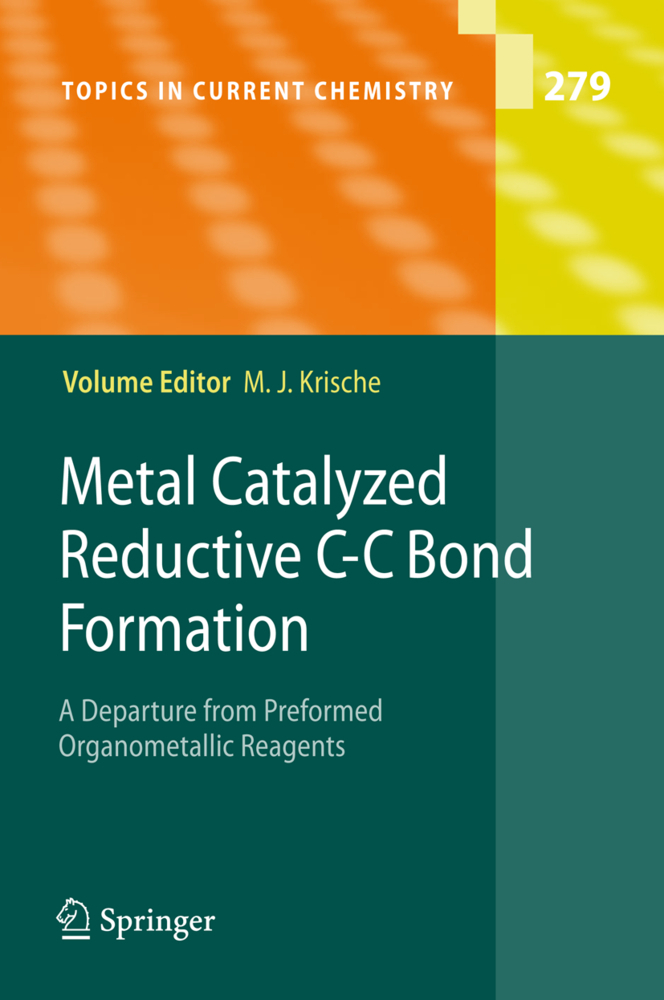Preparative Polar Organometallic Chemistry. Vol.1
Preparative Polar Organometallic Chemistry. Vol.1
Polar organometallic compounds are indispensable for the synthetic chemist. As this book shows, these almost ideal reagents are easy to prepare with high specificity under mild conditions and yet react quite readily with a great variety of substrates. Many compounds can be metallated directly at positions which would otherwise be difficult to substitute. Functional groups and heteroatoms already present in a molecule direct metallation to sites in their vicinity. The rules which govern polar organometallic chemistry often are not dominated by the usual n-delocalization and inductive effects; dipolar interactions, chelation, polarization, etc. often can be much more important. This affords novel synthetic opportunities. A good example is the development of a basically new type of aromatic substitution chemistry not based on positively charged intermediates. Seebach's injunction, "Thinking of polar organometallic compounds as carbanions is an impoverishment rather than a simplification" (International Symposium, Chemistry of Carbanions, Durham 1984), stresses the need to consider the metal not only as an integral, but perhaps also as the key component of these reagents. Rather than wandering off as solvated cations and acting as uninvolved spectators, the metals, rather than the anion moieties, can initiate and govern the subsequent reactions. To the founders of this field, e. g. Grignard, Ziegler, Gilman, Wittig, and their followers, the metal was critical. The title of Schlosser's book, "Polare Organometalle", certainly was apt.
1. Strongly Basic Reagents used in Organic Synthesis
2. Solvents and Some Reagents: Their Analysis, Purification and Storage
3. Laboratory Equipment and Some General Remarks Concerning Performance of the Procedures
4. Safety, Handling and Methods of Disposal
5. Experimental Procedures
II Reactivity of Polar Organometallic Intermediates
1. Introduction
2. General Remarks About Reactivity
3. Alkylation Reactions
4. Acylation Reactions
5. Carboxylation
6. Additions to Carbonyl Compounds
7. Additions to Heterocumulenes
8. Reactions with Sulfenylating Reagents
9. Reactions with Elemental Sulfur, Selenium and Tellurium
10. Reactions with Sulfur Dichloride
11. Trimethylsilylation
12. Introduction of Chlorine, Bromine and Iodine
13. Protonation and Deuteration
14. Exchange Between Counter Ions
III. Metallated Olefinic and Allenic Hydrocarbons
1. Deprotonation with Strongly Basic Reagents
2. Halogen-Lithium and Tin-Lithium Exchange
3. Direct Preparation from Halogen Compounds and Metal
4. Experimental Procedures
IV. Metallation of Hetero-Substituted Unsaturated Systems
1. Introduction
2. ?-Metallation of 1-Alkenyl Ethers, -Thioethers and Related Systems
3. ?-Metallation of 1.3-Dienyl Ethers and -Thioethers
4. ?-Metallated Haloalkenes
5. ?-Metallated Allenic Ethers, -Thioethers and -Amines
6. Metallated 1,2,3-Butatrienyl Ethers, -Sulfides and -Amines
7. Addendum: Metallation of N,N-Dialkylformamides and-Thioformamides
8. Experimental Procedures
V. Metallated Hetero-Aromatic Compounds
1. Introduction
2. Metallated Furans, Pyrroles, Thiophenes, Selenophenes andTellurophenes
3. Metallated Pyridines
4. Metallated Hetero-Aromatics with more than one Hetero Atom
5. Experimental Procedures
VI. Metallated Aromatic Compounds
1. Metallated Aromatic Hydrocarbons
2. Metallated Hetero-Substituted Arenes
3. Experimental Procedures
1. Generation of Polar Organometallic Intermediate by Deprotonation with Strongly Basic Reagents
2. Metallation-Functionalization Index
3. Index of Reaction Types
References.
to Volume 1 and Instructions for the Use of this Book and its Indexes
I. Organometallic Reagents, Solvents and Laboratory Equipment1. Strongly Basic Reagents used in Organic Synthesis
2. Solvents and Some Reagents: Their Analysis, Purification and Storage
3. Laboratory Equipment and Some General Remarks Concerning Performance of the Procedures
4. Safety, Handling and Methods of Disposal
5. Experimental Procedures
II Reactivity of Polar Organometallic Intermediates
1. Introduction
2. General Remarks About Reactivity
3. Alkylation Reactions
4. Acylation Reactions
5. Carboxylation
6. Additions to Carbonyl Compounds
7. Additions to Heterocumulenes
8. Reactions with Sulfenylating Reagents
9. Reactions with Elemental Sulfur, Selenium and Tellurium
10. Reactions with Sulfur Dichloride
11. Trimethylsilylation
12. Introduction of Chlorine, Bromine and Iodine
13. Protonation and Deuteration
14. Exchange Between Counter Ions
III. Metallated Olefinic and Allenic Hydrocarbons
1. Deprotonation with Strongly Basic Reagents
2. Halogen-Lithium and Tin-Lithium Exchange
3. Direct Preparation from Halogen Compounds and Metal
4. Experimental Procedures
IV. Metallation of Hetero-Substituted Unsaturated Systems
1. Introduction
2. ?-Metallation of 1-Alkenyl Ethers, -Thioethers and Related Systems
3. ?-Metallation of 1.3-Dienyl Ethers and -Thioethers
4. ?-Metallated Haloalkenes
5. ?-Metallated Allenic Ethers, -Thioethers and -Amines
6. Metallated 1,2,3-Butatrienyl Ethers, -Sulfides and -Amines
7. Addendum: Metallation of N,N-Dialkylformamides and-Thioformamides
8. Experimental Procedures
V. Metallated Hetero-Aromatic Compounds
1. Introduction
2. Metallated Furans, Pyrroles, Thiophenes, Selenophenes andTellurophenes
3. Metallated Pyridines
4. Metallated Hetero-Aromatics with more than one Hetero Atom
5. Experimental Procedures
VI. Metallated Aromatic Compounds
1. Metallated Aromatic Hydrocarbons
2. Metallated Hetero-Substituted Arenes
3. Experimental Procedures
1. Generation of Polar Organometallic Intermediate by Deprotonation with Strongly Basic Reagents
2. Metallation-Functionalization Index
3. Index of Reaction Types
References.
Brandsma, Lambert
| ISBN | 978-3-540-16916-1 |
|---|---|
| Artikelnummer | 9783540169161 |
| Medientyp | Buch |
| Copyrightjahr | 1990 |
| Verlag | Springer, Berlin |
| Umfang | XIV, 240 Seiten |
| Abbildungen | XIV, 240 p. |
| Sprache | Englisch |











